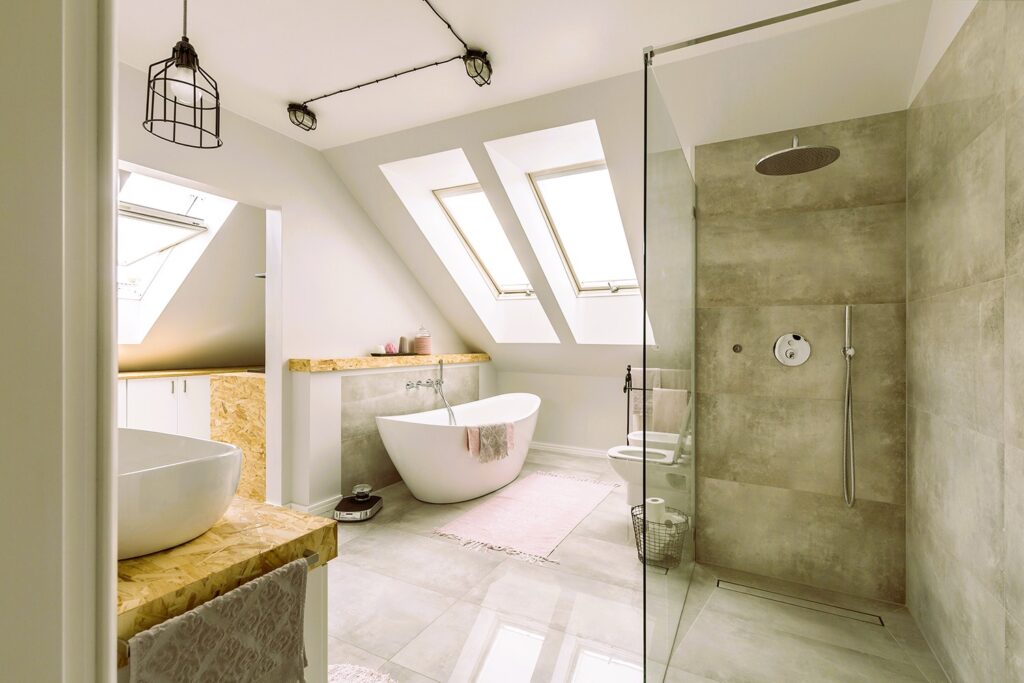Selecting the perfect tiles for your home can be an exciting and rewarding process. Tiles not only enhance the aesthetics of your space but also provide durability and functionality. With a wide range of options available, it’s important to follow a step-by-step process to ensure you choose the right tiles that align with your style, budget, and practical needs. In this comprehensive guide, we will take you through the process of selecting the ideal tiles for your home.
Step 1: Assessing Your Needs and Style:
Before diving into the world of tiles, take some time to assess your needs, preferences, and the overall style you want to achieve in your home.
- Functionality: Consider the specific areas where tiles will be installed and their functional requirements. Different spaces, such as kitchens, bathrooms, living rooms, or outdoor areas, have unique needs in terms of durability, water resistance, slip resistance, and ease of maintenance.
- Style and Aesthetics: Determine the overall style you want to create in your home. Do you prefer a modern, traditional, rustic, or eclectic look? Consider factors such as color schemes, patterns, and textures that will complement your existing decor or desired design theme.

Step 2: Exploring Tile Options:
Once you have a clear understanding of your needs and style preferences, it’s time to explore the vast array of tile options available.
- Tile Materials: Tiles are available in various materials, each with its own unique characteristics and advantages. Common options include ceramic, porcelain, natural stone (such as marble, granite, or travertine), glass, and mosaic. Research each material’s properties, durability, and maintenance requirements to determine which one best suits your needs.
- Size and Shape: Consider the size and shape of the tiles based on the scale of your space and the design effect you want to achieve. From small mosaic tiles to large-format tiles, each size and shape can create a different visual impact.
- Patterns and Textures: Explore different patterns and textures to add depth and visual interest to your space. Options such as subway tiles, hexagonal tiles, or textured tiles can create a unique focal point or enhance the overall design theme. The Art of Tile Installation: A Comprehensive Guide.
Step 3: Considering Practical Factors:
While aesthetics play a significant role, it’s important to consider practical factors that contribute to the longevity and functionality of your tiles.
- Maintenance and Cleaning: Consider the level of maintenance and cleaning required for each tile material. Some materials may be more resistant to stains, scratches, or fading, making them suitable for high-traffic areas or households with children or pets. Consult reliable sources such as the National Tile Contractors Association (NTCA) or the manufacturer’s recommendations for detailed cleaning and maintenance instructions.
- Slip Resistance: For areas prone to moisture or water exposure, such as bathrooms or outdoor spaces, prioritize tiles with appropriate slip resistance properties to ensure safety.
Step 4: Setting a Budget:
Set a budget that aligns with your overall home improvement project. Consider factors such as the cost per square foot, installation costs, and any additional materials or accessories required for the installation process. Keep in mind that investing in quality tiles can offer long-term durability and satisfaction.

Step 5: Seeking Inspiration and Expert Advice:
Gathering inspiration and seeking expert advice can greatly assist in making an informed decision.
- Online Resources: Explore design websites, blogs, and social media platforms to gather inspiration and ideas for tile selection. Websites such as Houzz or Dwell can provide a wealth of information and visual references.
- Showrooms and Suppliers: Visit tile showrooms and suppliers to see and touch the tiles in person. This allows you to assess their quality, texture, and color accuracy. Additionally, knowledgeable sales professionals can provide expert advice based on your specific requirements.
Conclusion:
Choosing the right tiles for your home is a step-by-step process that requires careful consideration of your needs, style preferences, practical factors, and budget. By following the steps outlined above and conducting thorough research, you’ll be able to select tiles that enhance the beauty and functionality of your space.
